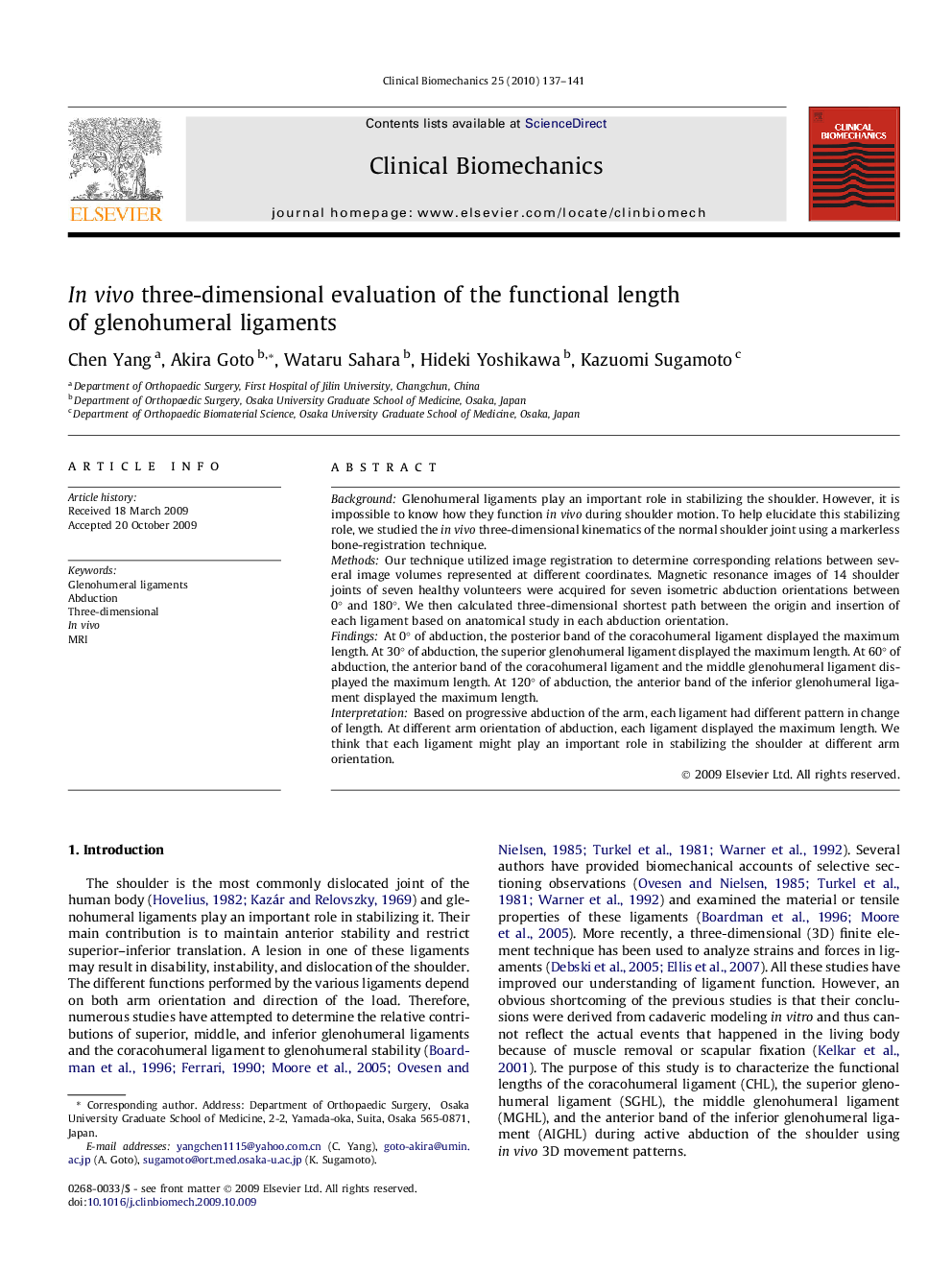| Article ID | Journal | Published Year | Pages | File Type |
|---|---|---|---|---|
| 4051181 | Clinical Biomechanics | 2010 | 5 Pages |
BackgroundGlenohumeral ligaments play an important role in stabilizing the shoulder. However, it is impossible to know how they function in vivo during shoulder motion. To help elucidate this stabilizing role, we studied the in vivo three-dimensional kinematics of the normal shoulder joint using a markerless bone-registration technique.MethodsOur technique utilized image registration to determine corresponding relations between several image volumes represented at different coordinates. Magnetic resonance images of 14 shoulder joints of seven healthy volunteers were acquired for seven isometric abduction orientations between 0° and 180°. We then calculated three-dimensional shortest path between the origin and insertion of each ligament based on anatomical study in each abduction orientation.FindingsAt 0° of abduction, the posterior band of the coracohumeral ligament displayed the maximum length. At 30° of abduction, the superior glenohumeral ligament displayed the maximum length. At 60° of abduction, the anterior band of the coracohumeral ligament and the middle glenohumeral ligament displayed the maximum length. At 120° of abduction, the anterior band of the inferior glenohumeral ligament displayed the maximum length.InterpretationBased on progressive abduction of the arm, each ligament had different pattern in change of length. At different arm orientation of abduction, each ligament displayed the maximum length. We think that each ligament might play an important role in stabilizing the shoulder at different arm orientation.
